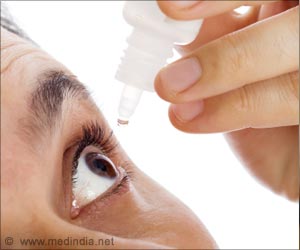Defeat screen eyes or dry eyes with the simple habit modification tips. Read more to know.
- There prevails a growing issue of eye strain caused by excessive screen time in the corporate world
- The causes of dry eyes include prolonged screen use, environmental factors, and lifestyle choices,etc
- Practical habit modifications can reduce eye strain, enhance eye care, and promote a healthier work-life balance
Let's delve into some causes of eye strain to navigate better strategies to curtail its effects.
Dry Eyes Causes
Dry eyes can affect people of all ages, including the current generation. Several factors can contribute to dry eyes in today's generation, including:Screen Time
The widespread use of digital devices like smartphones, tablets, and computers can lead to decreased blinking and increased evaporation of tears. This is known as digital eye strain or computer vision syndromeIndoor Environment
Many people, especially those working or studying indoors, are exposed to air conditioning, heating, and ventilation systems that can reduce humidity in the air, leading to dry eyesContact Lens Use
The use of contact lenses, especially extended-wear or improper use, can cause dry eyesEnvironmental Factors
Pollution, smoke, and allergens in the environment can irritate the eyes and lead to drynessLifestyle Choices
Smoking and excessive alcohol consumption can contribute to dry eyesMedications
Some medications, including antihistamines, decongestants, antidepressants, and certain acne treatments, can have dry eye as a side effectInadequate Blinking
When people are focused on screens or other tasks, they may blink less frequently, reducing the distribution of tears across the eye's surfaceDietary Factors
Poor nutrition, particularly a diet low in omega-3 fatty acids, can affect tear production and qualityClimate
Living in dry or arid climates can increase the likelihood of dry eyesHormonal Changes
Hormonal changes, such as those that occur during pregnancy, menopause, or while taking certain birth control pills, can affect tear productionUnderlying Medical Conditions
Certain medical conditions like rheumatoid arthritis, Sjögren's syndrome, thyroid disorders, and diabetes can be associated with dry eyesLASIK or Eye Surgery
Refractive surgeries like LASIK can temporarily disrupt tear film production, leading to dry eyes during the recovery periodInadequate Hydration
Not drinking enough water can lead to overall dehydration, which can affect tear productionStress
High levels of stress can lead to changes in tear composition and productionAging
As people age, tear production tends to decrease, making them more susceptible to dry eyes (1✔ ✔Trusted Source
Eyestrain - Overview
Go to source)
Tips to Reduce Eye Strain, Dry Eyes and Improve Eye Care
Excess screen time, often associated with digital eye strain or computer vision syndrome, can contribute to dry eyes. To tackle dry eyes caused by prolonged screen use, consider implementing the following tips:Follow the 20-20-20 Rule
Every 20 minutes, take a 20-second break from your screen and focus on something at least 20 feet away. This helps reduce eye strain and encourages regular blinkingBlink Regularly
Remind yourself to blink more often. Staring at screens tends to reduce blink frequency, which can lead to dry eyes. Blinking helps distribute tears evenly across the eye's surfaceOptimize Screen Setup
Ensure your computer monitor is at eye level and positioned about 20 inches away from your eyes. Adjust the screen brightness, contrast, and font size to reduce eye strainUse Proper Lighting
Maintain adequate lighting in your workspace to reduce glare and prevent the need for excessive screen brightness. Position your desk lamp to illuminate your workspace without causing reflections on the screenReduce Screen Glare
Consider using an anti-glare screen protector on your computer monitor or wearing anti-reflective (AR) coated eyeglasses to minimize glare and reflectionsScreen Settings and Blue Light Filters
Use screen settings or software applications that reduce blue light emissions. Blue light can disrupt your sleep patterns and exacerbate eye strainBlink Exercises
Perform blink exercises to help maintain a healthy tear film. Close your eyes gently for a few seconds every 10-15 minutes to allow your tears to redistributeUse Artificial Tears
Over-the-counter lubricating eye drops or artificial tears can help alleviate dry eye symptoms. Choose preservative-free options for frequent useHydrate
Stay well-hydrated throughout the day by drinking enough water. Dehydration can contribute to dry eyesHumidify Your Environment
Use a humidifier in your workspace or home to maintain an optimal indoor humidity level. Dry air can exacerbate dry eyesAdjust Your Screen's Text Size
Make text larger and more readable to reduce the need for squinting or leaning in closer to the screenLimit Screen Time
Try to limit your overall screen time, especially outside of work hours. Take breaks from electronic devices in the evening to allow your eyes to recover before bedtimeEyelid Hygiene
Practice good eyelid hygiene by cleaning your eyelids daily with a mild, non-irritating cleanser. This can help prevent meibomian gland dysfunction, which can contribute to dry eyesUse Artificial Tear Ointments
For severe dry eye symptoms, consider using thicker artificial tear ointments at night before sleep to provide lasting lubricationVisit an Eye Specialist
If dry eye symptoms persist or worsen despite these measures, consult an eye specialist or optometrist for a comprehensive eye examination and personalized treatment options (2✔ ✔Trusted Source
Remedies to Reduce Dry Eye Symptoms
Go to source)
To manage and prevent dry eyes, individuals should consider using artificial tears or lubricating eye drops, taking regular breaks from screens, maintaining a comfortable humidity level in indoor environments, staying hydrated, and managing any underlying medical conditions with the help of a healthcare professional. If dry eye symptoms persist, it's advisable to consult an eye specialist for a comprehensive evaluation and treatment recommendations.
References:
- Eyestrain - Overview - (https://www.mayoclinic.org/diseases-conditions/eyestrain/symptoms-causes/syc-20372397)
- Remedies to Reduce Dry Eye Symptoms - (https://www.aao.org/eye-health/tips-prevention/dry-eye-tips)
Source-Medindia












